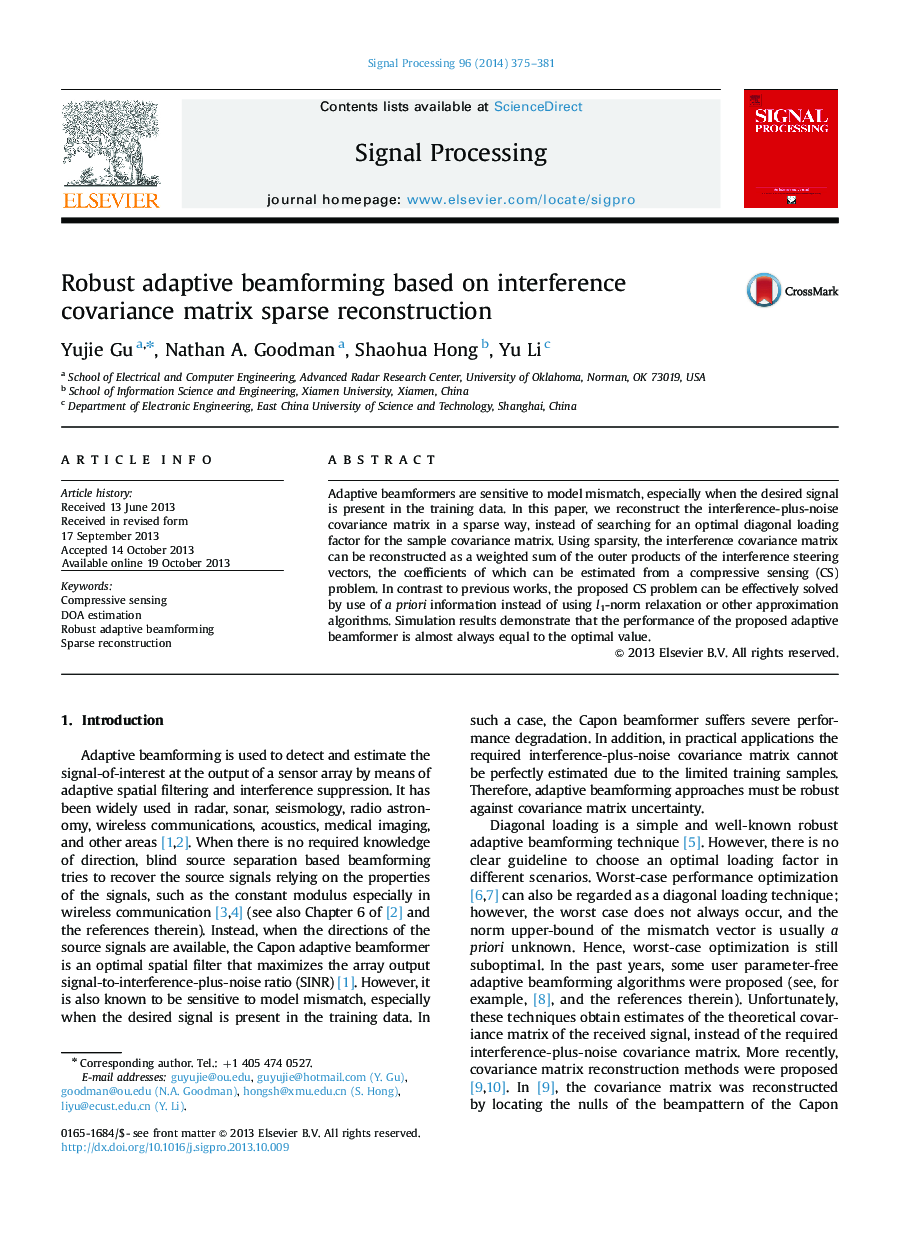| Article ID | Journal | Published Year | Pages | File Type |
|---|---|---|---|---|
| 562996 | Signal Processing | 2014 | 7 Pages |
•The interference-plus-noise covariance matrix is sparsely reconstructed for adaptive beamforming.•The proposed compressive sensing problem can be solved by use of a priori information instead of l1-norm relaxation.•The proposed beamformer offers a fast convergence and almost equals to the optimal performance.
Adaptive beamformers are sensitive to model mismatch, especially when the desired signal is present in the training data. In this paper, we reconstruct the interference-plus-noise covariance matrix in a sparse way, instead of searching for an optimal diagonal loading factor for the sample covariance matrix. Using sparsity, the interference covariance matrix can be reconstructed as a weighted sum of the outer products of the interference steering vectors, the coefficients of which can be estimated from a compressive sensing (CS) problem. In contrast to previous works, the proposed CS problem can be effectively solved by use of a priori information instead of using l1-norm relaxation or other approximation algorithms. Simulation results demonstrate that the performance of the proposed adaptive beamformer is almost always equal to the optimal value.
